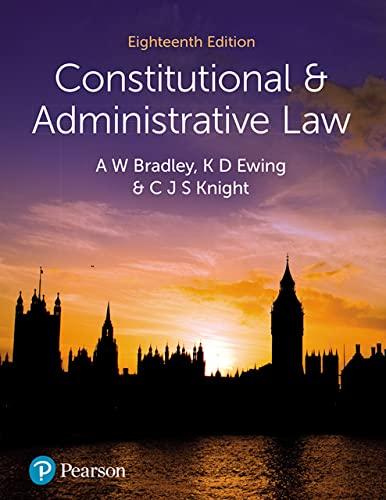Question
As you begin your new job as a paralegal at a criminal defense firm, the attorney, Lillian DeBee, asks you to sit in on an
As you begin your new job as a paralegal at a criminal defense firm, the attorney, Lillian DeBee, asks you to sit in on an initial client interview and take notes.The client, a 24-year-old college student named Roger Shephard, relates the following facts to you.
On January 2nd of this year, Roger was staying in a hotel after spending new years eve and day in the state capital. He packed his bags and checked out of the hotel, and drove his car to a convenience store to get food and gas. He went into the store and selected a bottle of orange juice and some donuts, which he opened and started to eat and drink before paying. When he reached the register with those items, as well as some other snacks and drinks he had purchased for the drive, he realized his credit card was missing from his wallet. He later realized that he used the card to set up a tab at a bar the night before and had forgotten to get it back from the bartender.
Roger apologized to the young clerk at the store and promised to return to pay for the juice and donuts, but the clerk said it was policy to prosecute all shoplifters and called the police. Roger was arrested and charged with petty larceny for stealing items with a total value of $7.95. Roger wants to make restitution and avoid a criminal record. The matter is set for arraignment in two weeks, and Roger wants Attorney DeBee to represent him.
Ms. DeBee asks you to make a letter to Roger for her signature explaining what is likely to happen at the arraignment and explain the charges to him.
Make a business letter that advises the client of the following:
- Explain the elements of New York State's criminal statute for petty larceny, breaking it down into its elements, and state what evidence the prosecution has of each element based on the facts you have been provided.
- Clarify the difference between a felony and a misdemeanor and under which category this charge falls.
- Walk the client through what an arraignment is and what is likely to happen on that day in court.
Clearly explain to the client what the burden of proof is in a criminal case and who has to meet that burden at trial.
Step by Step Solution
There are 3 Steps involved in it
Step: 1

Get Instant Access to Expert-Tailored Solutions
See step-by-step solutions with expert insights and AI powered tools for academic success
Step: 2

Step: 3

Ace Your Homework with AI
Get the answers you need in no time with our AI-driven, step-by-step assistance
Get Started


